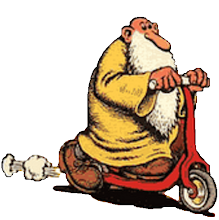
NY Times
By DENNIS OVERBYE
Published: December 5, 2008
The Large Hadron Collider, whose inauguration as the world’s biggest particle accelerator was cut short by an electrical accident last September, will run again next summer, but not at its full design strength, the project director said
“We have a lot of work to do over the coming months,” said Lyn Evans, in a press release from CERN, the European Center for Nuclear Research, “but we now have the roadmap, the time and the competence necessary to be ready for physics by summer.”
The machine, designed to collide protons with energies of 7 trillion electron volts apiece, is 17 miles around, and the superconducting electromagnets that steer the protons have to be cooled to 2 degrees Celsius above absolute zero. Parts of it have had to be warmed up for repairs, but CERN officials said that they hope to have the entire ring cold by the end of June, and that collisions perhaps as high as 5 trillion electron volts could begin in August.
Collisions at higher levels will not be possible by then because the magnets have not been “trained’ to the levels necessary for 7-trillion-electron-volt operation. This, CERN admits, is an “aggressive schedule” in the words of spokesman James Gillies.
The collider had just begun to fire up its beams of protons (but had not actually begun to collide them) , when, on Sept. 19, an electrical bus connecting two magnets developed a spot of resistance, began to heat up under the load of 9,300 amperes and vaporized.
Engineers reconstructing the mishap believe a spark punctured the blanket of super-cooled helium, which surrounds the magnets, and which itself is surrounded by a vacuum insulating layer. The helium flooded into the surrounding vacuum faster than relief valves could spray it into the main collider tunnel. The resulting internal pressures shoved some of the magnets, which weigh 10 tons, off their mounts and crunched the connections between them.
The beam pipes that the protons shoot through were also punctured and contaminated with soot.
Or as Dr. Gillies said, “It’s a mess.”
The incident happened in the last of eight sectors of the ring to undergo the testing needed to qualify for high-energy running and just two months before CERN would have shut down the collider for the winter, in order to save money on electricity. So the lab chose not to try to rush the machine back into operation this fall.
Not that they could have. To fix it all, 53 of the superconducting magnets will have to be brought out of the collider, which is 300 feet underground, to the surface for inspection and repair, a process that has already begun. Once they have all been fixed or replaced, the sector of the ring they occupy will have to be cooled all the way back down to near absolute zero again and tested.
In addition, the CERN engineers have performed diagnostic tests and found two other spots around the ring with suspicious resistance readings similar to what preceded September’s failure. Both are in sectors that had already been qualified for 5 trillion-electron-volt operations without incident.
One of them is in a sector adjacent to the damaged sector and has been warmed up. Dr. Gillies said engineers would look at it this winter. The other is in a part of the ring that is still cold and there is no plan to warm it up, he said.
CERN flirted briefly with the idea of warming up the entire ring this winter, in which case the colllider would not have operated at all in 2009.
“Everything was on the table,” Dr. Gillies admitted. But, he said, “The priority is to get data for the experiments.”
Large Hadron Collider - The Search For The Higgs [1 of 3]
Large Hadron Collider - The Search For The Higgs [2 of 3]
Large Hadron Collider - The Search For The Higgs [3 of 3]





No comments:
Post a Comment